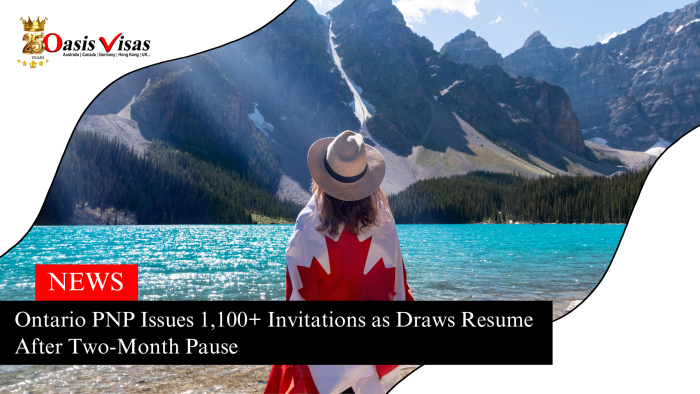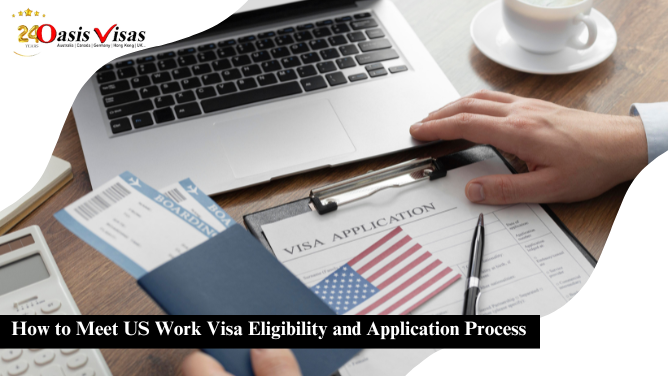
Securing a US work visa is the first step toward making that dream to work in the United States come true. The process is arduous, but knowing the eligibility criteria and the application process makes it relatively easier. Work visas allow for the legal living and work status of foreign nationals who can apply for different forms based on the job they are aiming to pursue.
Be a high-skilled worker or professional, or perhaps on the lookout for temporary working; there is a work visa for you. Let’s take you step by step through the process of how one may meet eligibility requirements in an application for a US work visa. It is essential to come out of this post knowing clearly what applies for working in the United States.
Step 1: Understanding The Types of US Work Visas
Most importantly, there are many types of work visas, but which one is the correct one is usually determined by the exact nature of the employment the person will be doing once in the United States. Work visas can either be temporary (non-immigrant) or permanent (immigrant).
- H-1B Visa: These are some of the most prized US work visas. They are directed for foreign nationals holding specialty occupations requiring high-level education or technical experience, like information technology, engineering, and medical careers.
- L-1 Visa: It is tailored for workers transferred from another country to the US branch office of the company where such employees are employed. Typically these L-1 visas are issued to multinational companies so that employees are transferred to offices in another country.
- O-1 Visa: Such visas are for people who possess exceptional abilities in their field, such as an athlete, artist, or scientist. This would apply if you have an extraordinary ability in your respective field.
- TN Visa: Such a visa is only applicable to citizens of Canada and Mexico and is particularly for professionals covered under NAFTA that allows them to work in the US for professional-specific occupations.
- E-2 Visa: If you are an investor or a business owner from a country that has a trade agreement with the US, you can work in your own business using this visa.
Each of these US work visas has eligibility requirements so be sure to choose one that suits your situation the best.
Step 2: Eligibility Requirements for US Work Visa
The eligibility requirements for a work visa depend mostly on the type of visa you are applying for. However, there are some common requirements across all categories.
- Job Offer: You usually need a job offer from a US employer for a work visa. In most cases, the employer plays a crucial role in the application process and must file certain paperwork with US immigration authorities on your behalf.
- Specialized Skills or Qualifications: Most work visas require that you have certain skills, qualifications, or educational background. For example, the H-1B visa requires that you have a bachelor’s degree or higher in the appropriate field.
- Labor Certification: For some work visas, such as the H-2A or H-2B, your employer must demonstrate that no qualified US workers are available for the position, labor certification.
- Financial Stability: You must demonstrate that you have the resources to sustain yourself and any dependents who may accompany you to the US. This is particularly important for those applying for visas where they are not immediately employed or self-employed.
- Valid Passport: You should have a valid passport from your country. Your passport should at least have a validity of six months from the date you wish to enter the US.
Step 3: Application Process for US Work Visa
It only makes sense that once you know what eligibility requirements pertain to your situation, it is time to look forward to applying for a US work visa. The following gives a step-by-step summary of the application process.
- Employer Files Petition. Most work visas start through the employer’s petition. He or she will usually file a petition on the visa applicant’s behalf with US Citizenship and Immigration Services USCIS. Before the candidate can apply for a US work visa, the application needs to be approved.
- Wait for Approval: If USCIS has approved the petition, then the waiting period begins for the decision to be rendered. Approval time varies, so one must wait patiently.
- Complete the DS-160 Form: Once that is approved, then one would be asked to complete the DS-160 Form, which is a form for an application for a non-immigrant visa. This is filled out online, for which one has to detail information about his background and as to why he requires a work visa.
- Schedule an interview visa: Once the application of the DS-160 has been submitted, one needs to make an appointment for an interview with the US embassy and or consulate in his or her home country. Expect exhaustive questions as the officer there weighs whether you qualify for one and whether you definitely would return to your country on expiration of the work visa.
- Support Documents: During your interview, you will be asked to present supporting documents such as your passport, DS-160 confirmation page, petition approval notice (Form I-797), a recent photograph and any others asked for by the US embassy.
- The last step would be attending the visa interview. During this interview, the consular officer will ask you questions that will help him determine if you are qualified for the work visa that you are applying for. Be honest, clear, and prepared.
- Wait for the Decision: After the interview, you will receive a decision regarding your work visa application. Once approved, your visa will be stamped on your passport, and you will be instructed on how to collect it.
Step 4: Post-Approval Travel to the US
Once you receive your work visa, you can now make arrangements for your travel. You should note that the work visa allows one to enter the US with employment intent but does not warrant entry into the country. You may be questioned more at the port of entry by the immigration officers concerning your visit.
In effect, acquiring a US work visa is basically a long process requiring elaborate planning, involving eligibility criteria and a definitive sequential application process. Whether it is H-1B or L-1, O-1, etc., knowing the process and how you are better organized can change your possibility of getting a work visa in the United States. Always be updated on the latest changes in visa requirements, and submit your application before the deadline.








